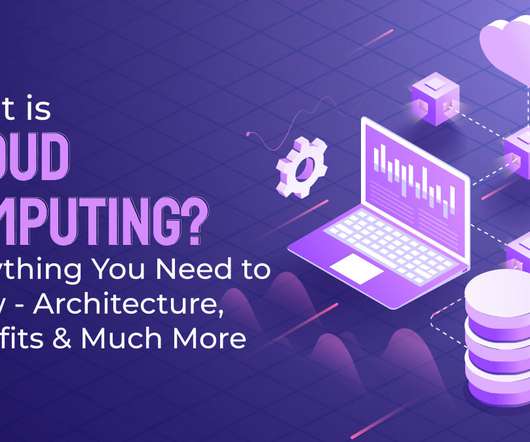What is Cloud Computing? Everything You Need to Know – Architecture, Benefits & Much More
Openxcell
JANUARY 6, 2023
PaaS solutions must include readily available programming components that let programmers add new functionality to their apps, including cutting-edge technologies like artificial intelligence (AI), chatbots, blockchain, and the Internet of Things (IoT). What is the purpose of cloud computing? Cloud computing service providers.















Let's personalize your content